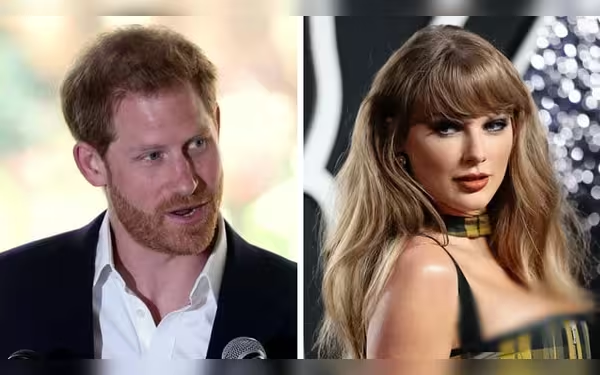Saturday, November 16, 2024 08:31 PM
Taylor Swift Granted Security Privileges Denied to Prince Harry
- Taylor Swift receives taxpayer-funded security at Wembley.
- Prince Harry's security downgraded since 2020.
- Disparity in security raises questions about public figure protection.
 Image Credits: thenews
Image Credits: thenewsTaylor Swift receives security privileges denied to Prince Harry, raising questions about public figure protection and threat assessment.
In recent developments, a stark contrast has emerged between the security arrangements for pop superstar Taylor Swift and those for Prince Harry, the Duke of Sussex. Prince Harry has been embroiled in a prolonged dispute with the UK Home Office regarding his security detail. This situation has become increasingly complicated since his security was downgraded in 2020, following his decision to step back from royal duties. Meanwhile, Taylor Swift, a 14-time Grammy winner, has reportedly been granted a privilege that Prince Harry has been fighting to regain.
According to reports, the Metropolitan Police, which has been described as 'reluctant' in its decision-making, was urged by Home Secretary Yvette Cooper and London Mayor Sadiq Khan to provide a taxpayer-funded blue-light convoy for Taylor Swift during her performances at Wembley in August. This service is typically reserved for high-ranking politicians and members of the royal family. However, Swift was allegedly given an exception, particularly in light of a foiled terror attack in Vienna, Austria.
John O’Connor, a former officer of the Metropolitan Police, expressed his concerns regarding the disparity in security provisions. He stated, 'The Met is unable to provide security for Prince Harry, but he must be in at least as much danger as Taylor Swift.' This statement raises questions about the criteria used to assess security needs for public figures.
In response to the situation, a spokesperson for the Metropolitan Police emphasized their operational independence, stating, 'Our decision-making is based on a thorough assessment of threat, risk and harm and circumstances of each case.' This assertion highlights the complexities involved in determining security measures for individuals, especially those in the public eye.
Richard Eden, the Diary Editor for the Daily Mail, commented on the situation, noting, 'Taylor Swift achieves what #PrinceHarry failed to do....' This remark underscores the ongoing challenges faced by Prince Harry in securing adequate protection, especially after his recent legal defeat against the Home Office regarding police protection.
The contrasting security arrangements for Taylor Swift and Prince Harry raise important questions about the criteria used to assess threats to public figures. As the debate continues, it is essential to consider the implications of these decisions on the safety and well-being of individuals in the public eye. The situation serves as a reminder of the complexities surrounding security and the need for a fair and consistent approach to protecting those who may be at risk.













